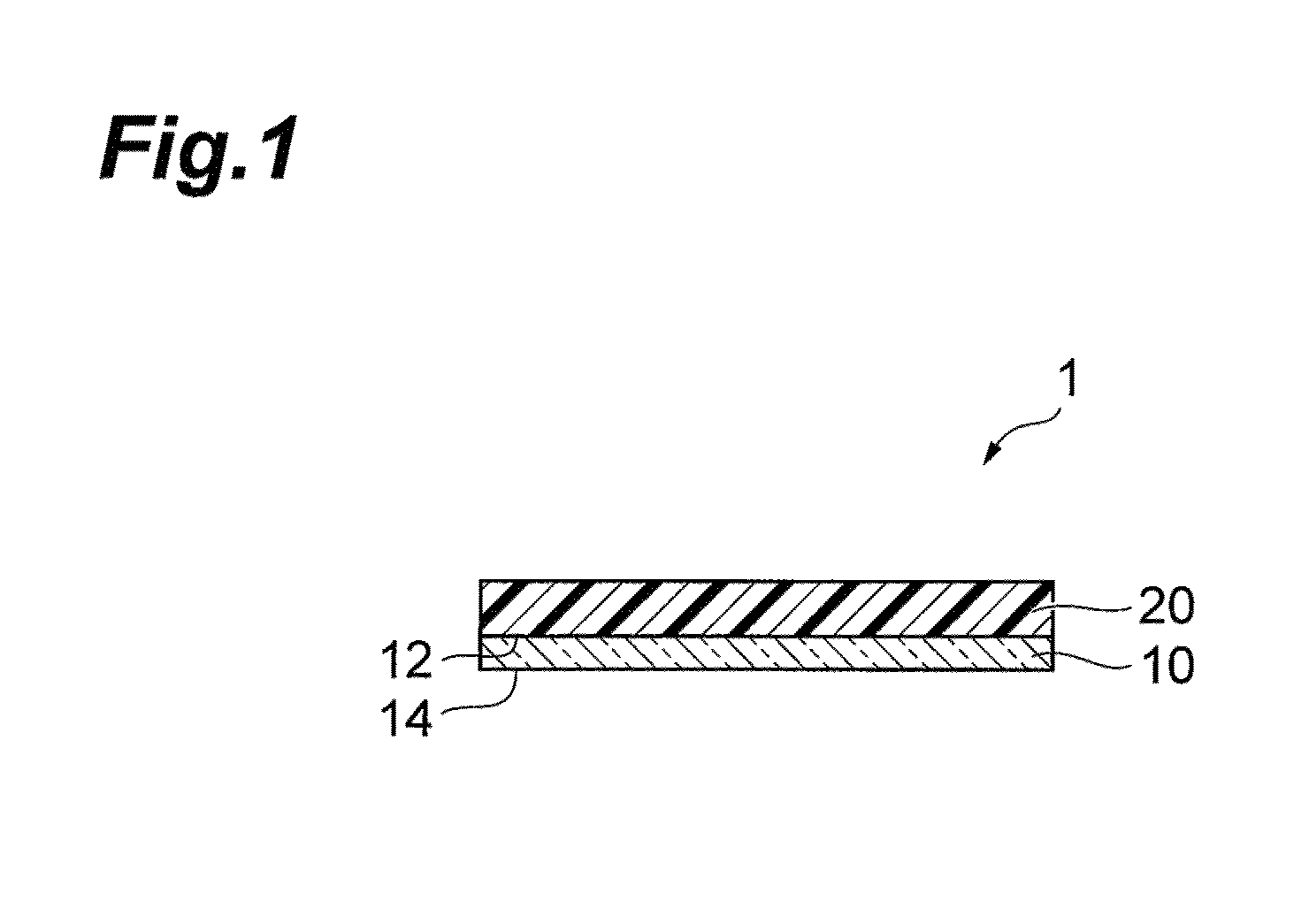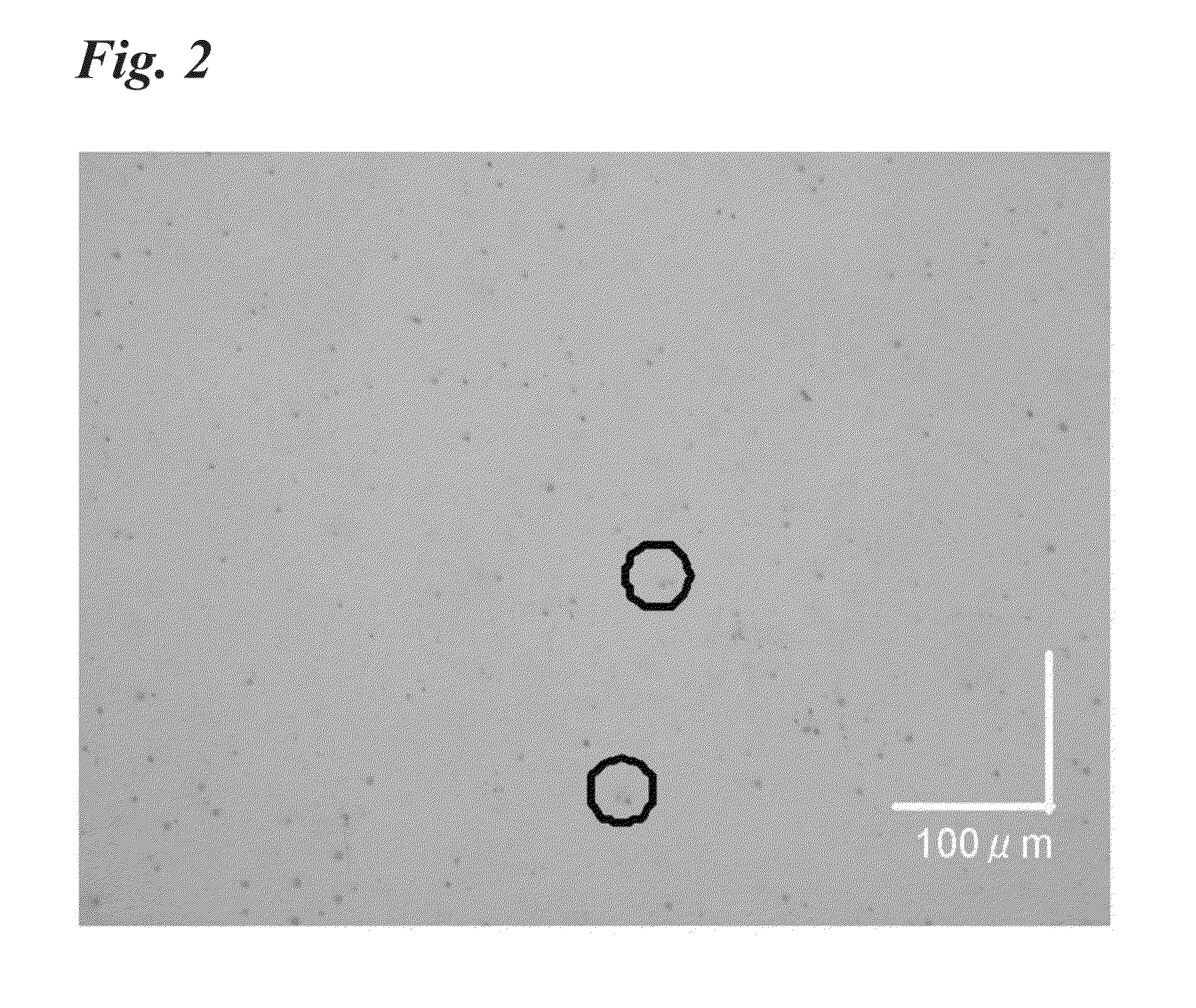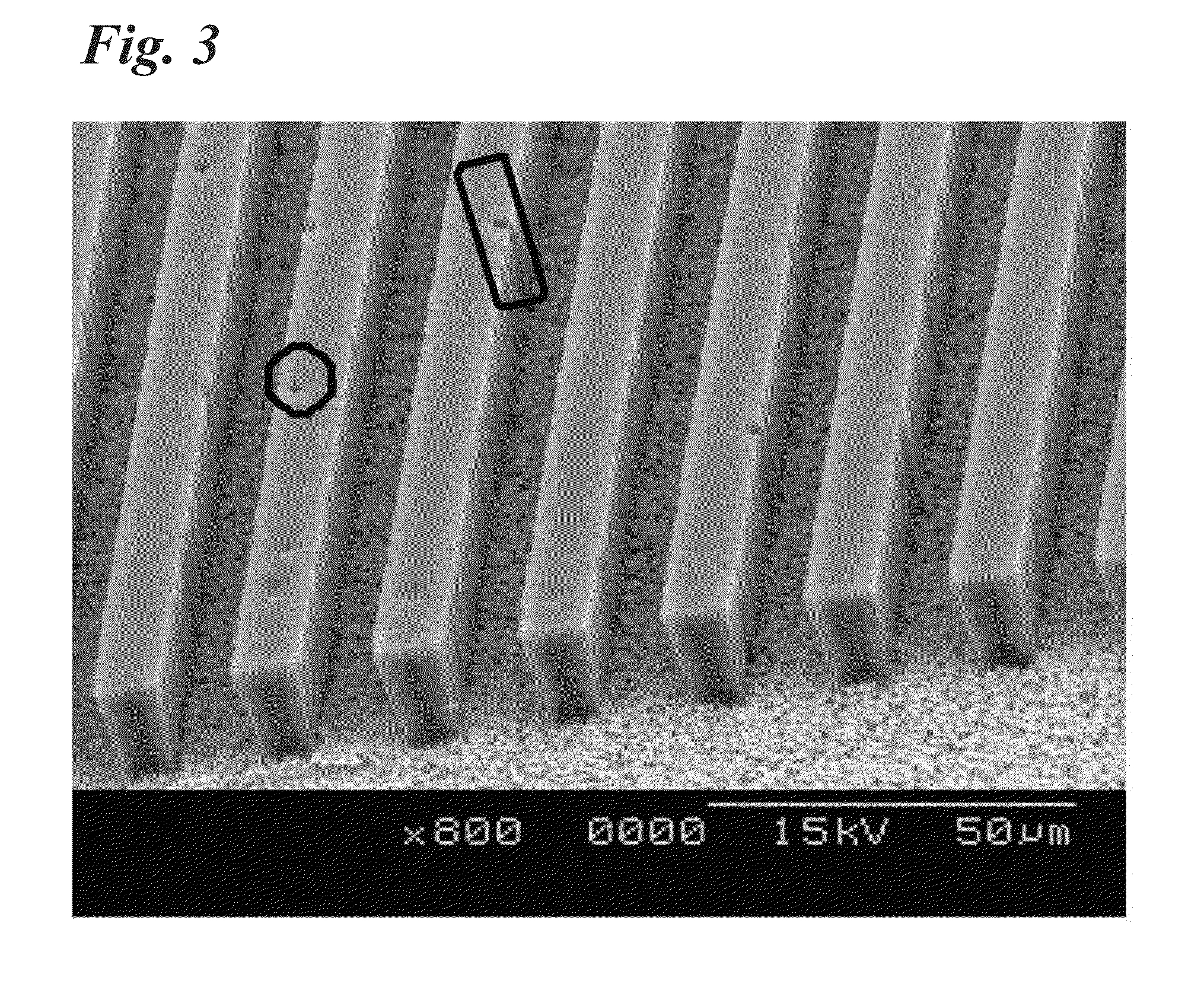Photosensitive element, method for forming resist pattern, and method for producing printed circuit board
a technology of resist pattern and photosensitive element, which is applied in the direction of photosensitive materials, circuit masks, instruments, etc., can solve the problems of difficult removal of bonded phototools, inability to meet the high resolution requirements of photosensitive films, etc., and achieves satisfactory adhesiveness and resolution, sufficiently reduced microdefects of resists, and rectangular cross-sectional shape
- Summary
- Abstract
- Description
- Claims
- Application Information
AI Technical Summary
Benefits of technology
Problems solved by technology
Method used
Image
Examples
synthesis example 1
[0175]In a flask equipped with a stirrer, reflux condenser, thermometer, dropping funnel and nitrogen gas inlet tube there was added 420 g of a mixture of toluene and methylcellosolve in a weight ratio of 6:4, and the mixture was stirred while blowing in nitrogen gas and heated to 80° C. Separately, as copolymerizing monomer there was prepared a mixed solution of 162 g of methacrylic acid, 30 g of methyl methacrylate, 270 g of styrene, 270 g of benzyl methacrylate and 4.4 g of azobisisobutyronitrile (hereinafter referred to as “solution a”), and, over a period of 4 hours, solution “a” was added dropwise to the mixture of toluene and methylcellosolve in a weight ratio of 6:4, that had been heated to 80° C. Next, 40 g of the mixture of toluene and methylcellosolve in a weight ratio of 6:4 was used for rinsing of the dropping funnel and added into the flask, and heating was then performed for 2 hours while stirring at 80° C. Also, a solution of 1.0 g of azobisisobutyronitrile dissolved...
synthesis example 2
[0176]A binder polymer solution as component (a) was obtained by the same procedure as Synthesis Example 1, except that as the copolymerizing monomer there was prepared a mixed solution of 150 g of methacrylic acid, 300 g of methyl methacrylate, 150 g of styrene and 4.4 g of azobisisobutyronitrile (hereunder referred to as “solution b”). Toluene was added to the binder polymer solution to adjust the non-volatilizing component concentration (solid concentration) to 40 wt %. The weight-average molecular weight of the binder polymer was 45000. The acid value of the binder polymer was 121 mgKOH / g.
[0177](GPC Conditions)
Pump: Hitachi L-6000 (trade name of Hitachi, Ltd.).
Column: Gelpack GL-R420+Gelpack GL-R430+Gelpack GL-R440M (total: 3) (all trade names of Hitachi Chemical Co., Ltd.)
Eluent: tetrahydrofuran
Measuring temperature: 40° C.
Flow rate: 2.05 mL / min
Detector: Hitachi L-3300 RI (trade name of Hitachi, Ltd.).
[0178](Measurement of Acid Value)
[0179]Synthesized binder polymer was weighed...
PUM
| Property | Measurement | Unit |
|---|---|---|
| Ra | aaaaa | aaaaa |
| diameters | aaaaa | aaaaa |
| wt % | aaaaa | aaaaa |
Abstract
Description
Claims
Application Information
 Login to View More
Login to View More - R&D
- Intellectual Property
- Life Sciences
- Materials
- Tech Scout
- Unparalleled Data Quality
- Higher Quality Content
- 60% Fewer Hallucinations
Browse by: Latest US Patents, China's latest patents, Technical Efficacy Thesaurus, Application Domain, Technology Topic, Popular Technical Reports.
© 2025 PatSnap. All rights reserved.Legal|Privacy policy|Modern Slavery Act Transparency Statement|Sitemap|About US| Contact US: help@patsnap.com



